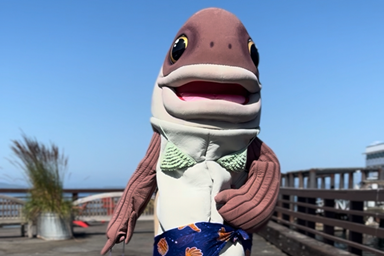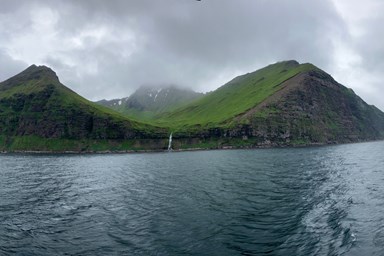Ron Rogness , November 18, 2024
2024 Wild Alaska Pollock Fishing Year Concludes

With October coming to an end, the 2024 Wild Alaska Pollock fishery has also come to a conclusion. If one were looking for headlines for this year’s Eastern Bering Sea fishery, good catch rates, favorable fish sizes and low incidental catches would all be appropriate. While the pace of fishing in 2024 was somewhat behind last year’s pace, fishermen in the directed Wild Alaska Pollock fishery harvested 1,262,173 mt of the total quota of 1,263,580 mt - an impressive 99.9%. This year’s fishery was particularly “clean” with incidental catches of salmon among the lowest recorded in the last 24 years.

In the Gulf of Alaska, the strict incidental catch control rules in place led to the closure of the directed fishery in the Central Regulatory Area at the end of September, with 36,920 mt of quota remaining. Despite this closure, the final catch of Wild Alaska Pollock in the Gulf of Alaska was 123,708 mt, just under the 124,997 mt harvested in 2023. With the Central Regulatory Area closed prematurely, the fleet was not able to take advantage of the increased quota in 2024.
Looking at production, as shown in the chart below, the most notable change in 2024 was the dramatic shift in production away from surimi to pin bone-out fillets. Surimi production fell by 24,629 mt, which is the largest decline in surimi production not in a year where there was a reduction in quota. The independent decisions by processors to produce less surimi is a direct result of the dramatic decline in surimi prices in all the major global markets due largely to the increase in Russian surimi production and their predatory pricing in those markets.
Overall fillet production in 2024 was 168,261 mt, well above the long-term average of 158,000 mt. This was an increase of 12,193 mt from 2023 and the highest since the pre-Covid year of 2019. Within the fillet category, we also saw significant changes. PBO production jumped by more than 27 percent, increasing from 96,238 mt in 2023 to 122,593 mt this year. Both deep-skinned and pin bone-in fillet production decreased in 2024, partially offsetting the increase in PBO production. While we won’t know how much of this fillet production will stay in the US until 2024 final exports are available, data through September reveal that the amount of product staying in the United States will increase. Comparing catch and exports through September shows that 50.7% of the production remained in the United States while in 2024, data over that same period shows that 55% of the production will remain in the United States, this despite the lower deep-skinned production that is primarily a product that is consumed in the United States.
Looking at the other product forms, we also see increases in headed and gutted production, which was expected as markets look to U.S. origin product to produce twice-frozen product for the US market due to the ban on Russian-origin seafood that took effect in May of 2024. We also see a 12% increase in minced production, which is also a function of the desire to produce less surimi since processors can often choose between surimi and minced for flesh that remains after the fillets have been removed. Finally, we see a strong year for roe production which increased by 25%, an indication of larger, more mature fish harvested in the 2024 fishery.
Don’t forget that you can keep track of catches and production by subscribing to GAPP’s weekly Fishery Progress Report and exports and imports by subscribing to our Monthly Trade Updates. If you do not receive these, please contact GAPP at [email protected] and ask to be added to the list of subscribers.

